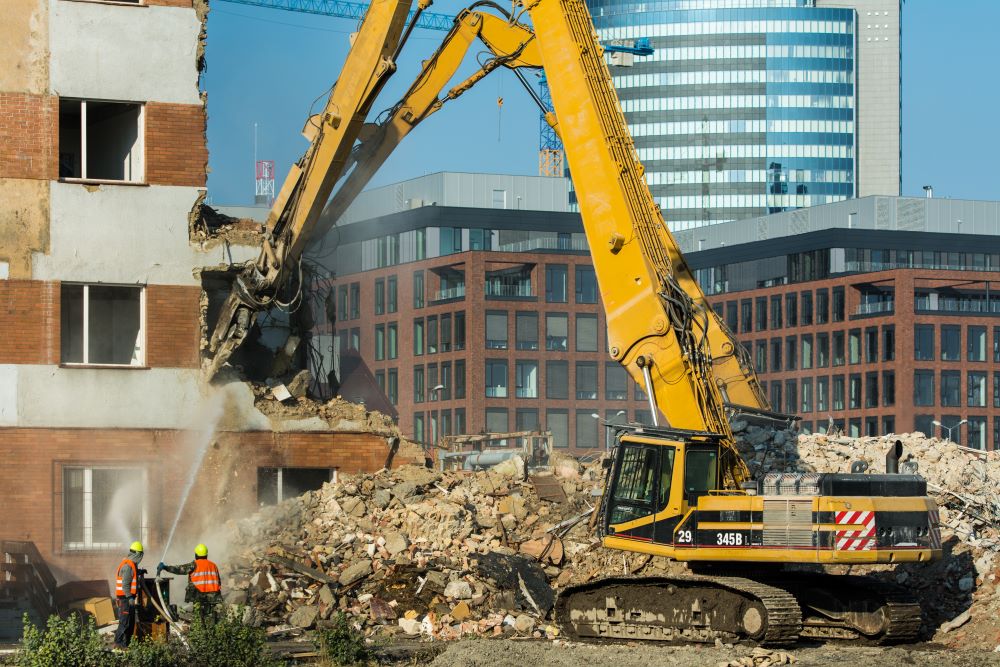
How an Industrial Demolition Company Preps Aging Factories
Industrial demolition is an essential part of the building and remodeling industry. The demand for effective removal increases as factories age and become outdated. This transition is facilitated by an industrial demolition company, which guarantees safety while opening the way for future construction. However, there is a rigorous preparatory procedure that must be completed before wrecking ball swings.
Preparing old factories is a complex process that needs knowledge and planning. Demolition contractors must be prepared to meet the various obstacles that arise at every stage, ranging from structural instability to hazardous chemicals. Effective tactics may make the difference between possible setbacks and a successful operation. How do these professionals prepare for such challenging undertakings, then? Let’s examine the crucial actions an industrial demolition business does to get old facilities ready for their future phase.
OUR SERVICES
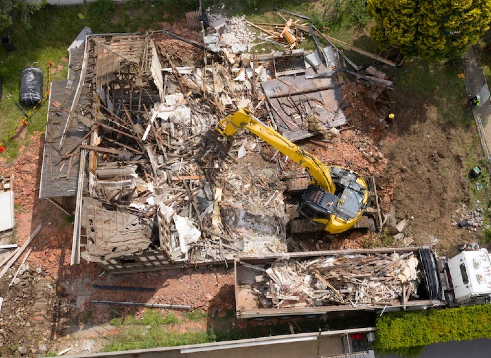
Structure Demolition. Residential, Commercial & Industrial
If your structure poses a health, safety, or environmental risk, demolition can prevent costly citations or fatal accidents. While this may seem daunting, you are just a phone call away from having your residential demolition done professionally, responsibly, and at a great price.
Talk to a Demolition Specialist Now! 916.249.5001
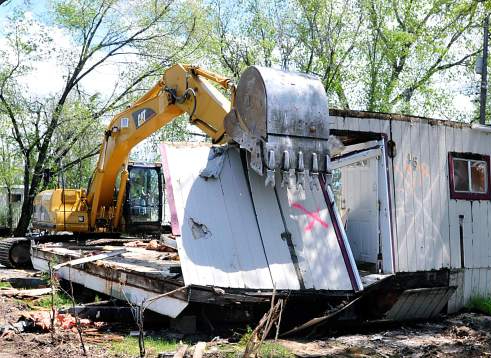
Mobile Home Demolition
We demolish and haul away mobile homes. Any size, anywhere, anyhow. We are fast, clean and competitive. We serve most of Northern California. There are many factors to consider when removing or demolishing your old trailer, mobile home, or manufactured home like: the processes involved, costs, time, contractors, debris, and permits.
Talk to a Demolition Specialist Now! 916.249.5001
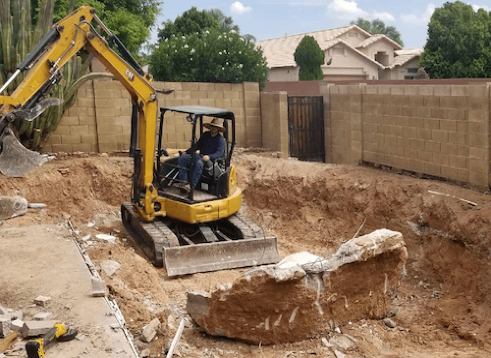
Pool Demolition
When removing a pool in Sacramento, California with the professional demolition team of Maxton Demo, you’re guaranteed peace of mind from beginning to end. From your initial request for an estimate to clean-up, you can expect our pool demolition process that’s completely professional and safe.
Talk to a Demolition Specialist Now! 916.249.5001
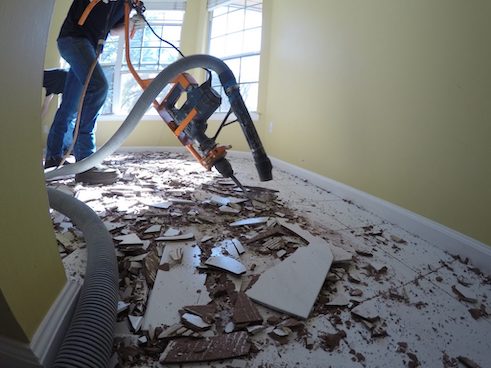
Floor Demolition
Flooring demolition, like any other major home renovation work, requires a specific set of skills and tools to be performed properly. You need experts in flooring demolition to get you the best floors possible. Contact us to find out more about how we can help you today.
Talk to a Demolition Specialist Now! 916.249.5001
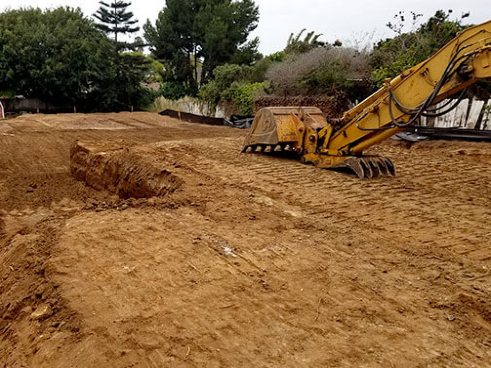
Grading & Excavating
If you need an experienced excavator and grader in Sacramento, call us today. One of the many reasons that residential, commercial, and industrial customers choose to work with us is because we’re able to provide a broad range of services to help construction-related projects get done in less time and at a reduced cost.
Talk to a Demolition Specialist Now! 916.249.5001

Roof Snow Removal
Heavy snow & ice dams can cause significant roof and home damage. Roof Snow removal is our specialty during the winter months. Serving the Sacramento, California area for 10 years, we can get your roof snow removed and promise a quick response and reasonable rates.
Talk to a Demolition Specialist Now! 916.249.5001
The Value of Getting Old Factories Ready for Demolition
An essential first step in ensuring a successful project’s implementation is preparing old industries for destruction. These locations often include dangerous chemicals and structural flaws that endanger nearby populations in addition to employees.
Preparation reduces the influence on the environment. When working with older structures, lead paint or asbestos may be present. Recognizing these compounds in advance guarantees their safe removal and adherence to rules.
Furthermore, careful planning enables an industrial demolition company to create a customized strategy. Every industry has different difficulties, ranging from intricate layouts to the need to remove equipment. Comprehending these particulars facilitates effective scheduling and resource allocation.
Businesses may expedite the whole demolition process by investing time in efficient preparation. This results in shorter turnaround times and lower expenses while maintaining the highest level of safety at all times.
Typical Obstacles Industrial Demolition Companies Face
During their projects, industrial demolition contractors face a number of difficulties. Managing hazardous materials is one of the main problems. Lead paint, asbestos, and other hazardous materials that need to be handled carefully are often found in aging industries.
Older structures’ structural fragility is another obstacle. These buildings can have deteriorated over time, endangering personnel and machinery while they are being demolished. It takes skill and preparation to ensure safety while disassembling these installations.
When it comes to industrial demolition, environmental rules are also quite important. Local regulations pertaining to emissions and trash disposal must be followed by businesses, which complicates the project schedule.
There are logistical difficulties as well. Heavy equipment required for extensive demolitions may not be able to reach congested metropolitan areas. It takes strategic thinking and creative ideas from seasoned experts to coordinate around current infrastructure.
It’s crucial to control customer expectations since they often desire quick outcomes without sacrificing standards of quality or safety.
Techniques for Anticipating Aging Factors
A number of calculated actions must be taken in order to prepare old industries for destruction. The steps are as follows:
Perform a comprehensive inspection: It’s crucial to carry out a comprehensive examination of the plant and its structures prior to starting any preparatory work. This will assist in identifying possible risks and identifying the tools and methods required for the demolition operation.
Choose the best course of action: There may be several methods for preparing a factory for destruction, depending on its state. For instance, if the structure is physically sound, a conventional demolition using large machinery would be enough. However, other techniques like controlled implosion or deconstruction can be required if hazardous chemicals are present or if the structure is in bad condition.
Eliminate dangerous items: Before any demolition work can start, any hazardous materials that may be within the facility must be taken out. This includes lead paint, asbestos, and other hazardous materials that might endanger both employees and local citizens.
Secure utilities: All utilities, including gas, electricity, and water, must be turned off or moved before demolition may begin. By doing this, mishaps or injuries during the demolition process would be avoided.
Salvage precious materials: In some situations, the factory may include valuable materials that may be sold or utilized again. Metals, machines, and other equipment are among them. Before demolition starts, it’s critical to identify these items so they can be appropriately removed.
Make plans for the disposal of debris: Demolition will unavoidably produce a lot of garbage and debris, which must be disposed of appropriately. Make arrangements for the removal and ecologically appropriate disposal of this waste.
Think about the environmental impact: It’s crucial to take precautions to minimize the potential negative effects of industrial demolition on the environment. This might include preventing erosion, controlling dust, and properly disposing of dangerous waste.
Employ qualified experts: It’s not a task for amateurs to prepare an old factory for destruction. It calls for certain expertise, tools, and abilities. Make sure you work with seasoned experts who have received training in safe demolition techniques.
Acquire required permissions: You must acquire the required permits from the local government or regulatory bodies prior to starting any demolition operation. This guarantees that the demolition will be carried out in accordance with all applicable rules and regulations.
Stakeholder communication: It’s critical to inform local stakeholders about the deconstruction process and any possible interruptions if the factory is situated close to other enterprises or in a residential neighborhood. This will guarantee a seamless transfer and minimize any hassle.
The process of preparing old industries for destruction is complex and requires meticulous preparation and execution. It’s critical to carry out a comprehensive examination, choose the best course of action, remove dangerous items, safeguard utilities, recover precious things, plan for debris disposal, take the environment into consideration, recruit qualified experts, gain the required permissions, and keep stakeholders informed. You may guarantee a safe and effective demolition of an old factory by following these guidelines.
Equipment and Tools Used in the Procedure
A wide range of tools and equipment are needed for industrial demolition. Every component is essential to the safe dismantling of old factories. The following are some of the most often used instruments and apparatuses in the procedure:
Large volumes of soil and waste may be dug up, lifted, and moved with the help of heavy-duty machines called excavators. They may also be fitted with tools for breaking down buildings, such as shears or breakers.
Hydraulic Hammers: Often referred to as jackhammers or rock breakers, hydraulic hammers are strong instruments used to fracture hard materials like concrete.
Small, adaptable devices, skid steer loaders can navigate in confined locations and carry out a range of duties, including loading and moving items.
Cranes: During the demolition process, cranes are required to lift and move large items. They may also be used to gradually disassemble bigger buildings.
Dump Trucks: To keep the demolition site tidy and orderly, dump trucks are employed to remove rubble.
Sledgehammers: These portable instruments are used to split concrete or other construction materials into smaller bits.
Demolition Shears: These strong cutting instruments may be mounted to excavators or other pieces of equipment to cut through metal beams and other structural elements.
Equipment for Wire Sawing: This kind of equipment is used to cut through materials that are too tough for conventional saws, such as thick concrete.
Safety Gear: Because demolition work may be risky, workers must be protected with gear like steel-toed boots, safety glasses, and hard helmets.
Dust Suppression Systems: These systems contribute to a safer and healthier working environment by reducing dust and other airborne particles during the demolition process.
For a safe and effective demolition procedure, it’s essential to employ the appropriate tools and equipment for the task. Professionals with experience will know which tools and equipment are most appropriate for a certain job.
Safety Procedures’ Function in Industrial Demolition Preparation
When getting old industries ready for destruction, safety precautions are essential. The welfare of its employees and the neighborhood must come first for an industrial demolition company. The following are some essential safety precautions to consider when getting ready:
Risk Assessment: A comprehensive risk assessment should be carried out before beginning any demolition operations. This entails determining possible risks and creating plans to reduce or eliminate them. The building’s state, the presence of any hazardous chemicals, and the effect on neighboring buildings and utilities should all be considered in the evaluation.
Identification and Removal of Hazardous Materials: Asbestos, lead paint, and PCBs are among the hazardous materials found in many older industrial facilities. Deconstruction cannot start until these materials have been located and appropriately removed. If this isn’t done, workers and the community may be in considerable danger of health problems.
Structural Stability Evaluation: To ascertain the safest demolition strategy, a structural stability evaluation must be carried out. This includes assessing the building’s foundation, construction, and any possible flaws that can provide a concern during destruction.
Appropriate Equipment Selection: For safe demolition preparation, the appropriate equipment is essential. The location and scale of the structure must be taken into consideration while choosing heavy equipment like cranes, bulldozers, and excavators. Personal protection equipment (PPE), including masks, gloves, hard hats, and safety glasses, should also be used by employees.
Security Perimeter: To stop employees or members of the public from entering the demolition site without authorization, a security perimeter should be built around it. This is particularly crucial in the presence of dangerous chemicals.
For an industrial demolition project to be both safe and effective, planning is crucial. This entails carrying out a comprehensive risk assessment, locating and eliminating dangerous items, evaluating the stability of the structure, choosing the appropriate tools, and protecting the perimeter. An industrial demolition company may protect the health and safety of its employees and the community by adhering to certain safety precautions.
Outdated Manufacturing Locations Are Cleared By An Industrial Demolition Company
In an economy that is always changing, industrial demolition is essential to increasing safety and efficiency. Older facilities may become ineffective or unfit for contemporary operations as technology develops. By tearing down these antiquated systems, companies can adjust to the changing needs of the market.
Additionally, industrial deconstruction makes room for creative ideas. In addition to freeing up precious land, this procedure makes it easier to build cutting-edge buildings that can house sophisticated technology and operations.
Another important consideration is safety. Hazards like crumbling buildings or contaminated environments might arise from abandoned locations. Businesses may safeguard workers and the communities around them by hiring a skilled industrial demolition company to handle hazardous chemicals and structural debris properly.
While addressing pressing safety issues related to antiquated production facilities, successful industrial deconstruction creates the foundation for future success.
Outdated Production Site Types
There are many different types of outdated industrial sites, and each one has its own set of difficulties. Urban landscapes are often dominated by abandoned factories, which are the remains of a once-thriving industry. These establishments can have antiquated equipment and infrastructure that isn’t up to date.
Closed manufacturing plants are another kind. They may have shut down because of changes in the economy or improvements in technology. The location is ready for reconstruction since the equipment can be outdated. Furthermore, closed factories could have environmental issues that need to be handled by professionals to avoid pollution.
Another common example of this is warehouses. Older distribution facilities find it difficult to meet the demands of modern logistics as e-commerce expands. Modern warehouses that satisfy the shipping and receiving criteria of today may be built using industrial demolition.
When chemical processing facilities close, there are serious issues. Because of the possible dangerous compounds left behind, these locations need to be handled carefully. Companies that specialize in industrial demolition have the know-how to handle these materials securely.
Every kind of obsolete manufacturing facility has to be demolished with a different strategy to guarantee efficiency and safety while opening the way for new construction.
Procedures for Demolition
Careful preparation precedes the demolition procedure. This stage entails evaluating the location and locating any potentially dangerous substances, such as lead or asbestos. For safety, it is essential to comprehend these threats. In order to choose the most effective method for tearing down buildings, the demolition business also inspects the location.
Getting the required permissions is the next step. What may and cannot be destroyed is often determined by local legislation. This red tape will be easily navigated by an industrial demolition company. Dismantling buildings, clearing away trash, and taking care of any environmental issues are all part of the actual demolition process. Throughout the process, demolition contractors help keep personnel and the surrounding regions safe.
Preparation begins as soon as permissions are obtained. Before real destruction takes place, buildings may need to have important parts removed, such as fixtures or equipment. There is a set order for the actual destruction. Stability is maintained throughout the deliberate demolition of buildings by the use of heavy machinery.
Debris control thus becomes essential. In addition to clearing the area, effective debris removal prepares the ground for any future development options on the property.
Considering Safety and the Environment
When it comes to industrial demolition, safety is crucial. From exposure to toxic chemicals to falling debris, workers confront a variety of risks. A strong safety procedure reduces hazards on the job site. Strict safety regulations must be followed by all employees, including donning personal protective equipment (PPE) and adhering to comprehensive protocols while handling dangerous products.
Environmental factors are also very important. Waste from demolition may damage the environment if improperly handled. Environmental protection is given top priority throughout the whole procedure by a skilled industrial demolition company. They minimize the effect on nearby ecosystems, recycle materials wherever feasible, and securely remove and dispose of hazardous items.
Before any work starts, it is crucial to properly identify hazardous materials like lead and asbestos. To guarantee regulatory compliance, these compounds need to be handled and disposed of carefully. A seasoned industrial demolition company will have the know-how and tools necessary to handle these items securely.
During demolition operations, dust management techniques are also crucial for preserving the purity of the air. Dust suppressants or water spraying systems may reduce airborne particulates. In order to minimize disturbances to the neighborhood, demolition contractors also adhere to noise restrictions.
Using eco-friendly methods lessens the influence on the environment while promoting sustainability initiatives. A responsible approach ensures a safer future for all parties concerned and has a positive impact on the company’s reputation and community connections.
Material Reuse and Recycling
One essential component of the industrial demolition process is material recycling and reuse. It encourages sustainability while reducing waste. Recycling conserves resources, lowers pollution, and saves energy. Additionally, it offers a chance to recycle priceless resources for brand-new building projects.
Numerous parts from defunct manufacturing facilities may be used for a variety of uses. During demolition, steel beams, concrete, and mechanical pieces are often rescued. These materials may be recycled for use in other industrial operations or building projects. Additionally, recycling saves money. It lowers the price of purchasing new materials while assisting businesses in adhering to regional laws and environmental norms. Recycling is a desirable choice for companies since some nations even provide incentives for it.
This method conserves natural resources in addition to lowering landfill contributions. Businesses show their dedication to environmentally friendly activities by employing reused materials. Additionally, building owners may assist sustainability initiatives by repurposing recovered materials in their own projects.
Additionally, businesses trying to reduce their raw material costs might save a lot of money by recycling. You can help environmental health and save money at the same time. These factors make material reuse and recycling a crucial component of industrial demolition.
Working with a skilled industrial demolition company guarantees that these procedures are carried out effectively and ethically. Navigating the intricacies of material rescue and reuse is made simpler by their experience.
Advantages of Working with an Industrial Demolition Company
Employing an industrial demolition company elevates competence. These experts are aware of the difficulties in properly disassembling buildings. Their background reduces the dangers of dangerous materials and unstable structures.
Saving money is yet another important benefit. Expert services often result in effective resource management, which lowers possible costs from unforeseen issues. Reusing and recycling materials may also result in long-term financial savings for businesses.
Another important factor to consider is time efficiency. Teams with expertise finish tasks more quickly than unskilled laborers, enabling companies to concentrate on new innovations sooner. Another advantage is the possibility of less liability. To safeguard themselves and their customers from mishaps or property damage, professional demolition companies have insurance coverage. In the end, this may help companies save money and lessen the worry that comes with possible litigation.
Additionally, these businesses make use of cutting-edge equipment to guarantee comprehensive and secure demolition procedures. In addition to improving safety, this technology increases accuracy while working. For today’s industry, environmental obligations are essential. An established business places a high value on sustainability by recycling materials wherever feasible, adhering to eco-friendly procedures, and turning abandoned locations into new possibilities.
How a Modern Redevelopment Is Made Possible by an Industrial Demolition Company
Working with an industrial demolition company is essential when it comes to handling old manufacturing sites. Their knowledge guarantees that the procedure is effective, secure, and ecologically conscious. Businesses may make well-informed judgments by identifying the many kinds of outmoded facilities and comprehending the significance of industrial demolition.
The demolition process’s methodical processes reduce disturbances while upholding safety standards. Furthermore, emphasizing material reuse and recycling helps the environment and may save project expenses in the future.
From specialized equipment to expert staff, hiring a professional industrial demolition company offers many benefits that let businesses concentrate on what they do best: continuing with their operations. Accepting these services entails welcoming advancement and opening up new avenues for corporate growth.
Do you have a Question?
Talk to a Demolition Specialist Now! 916.249.5001
Request Formal Quote